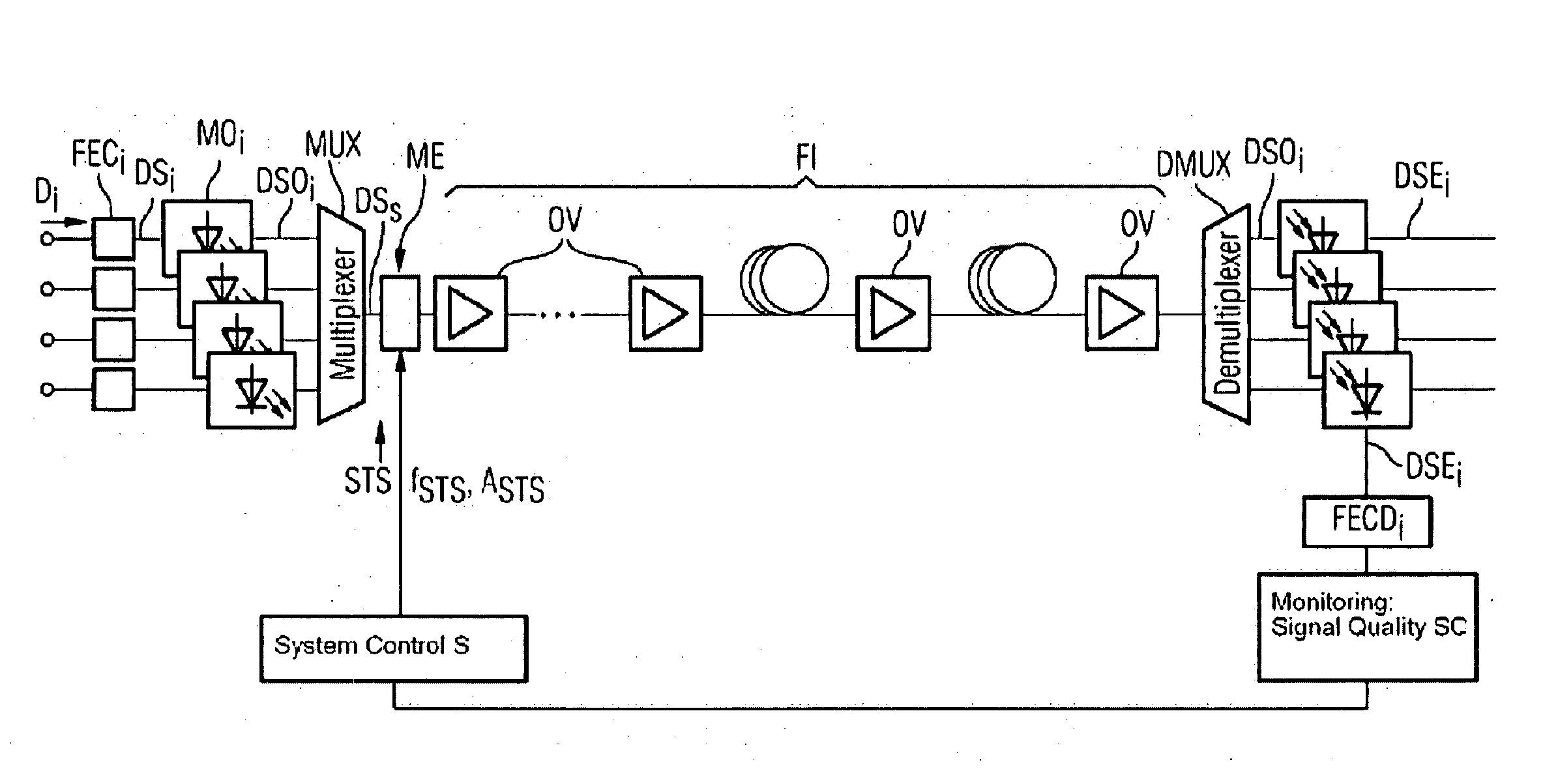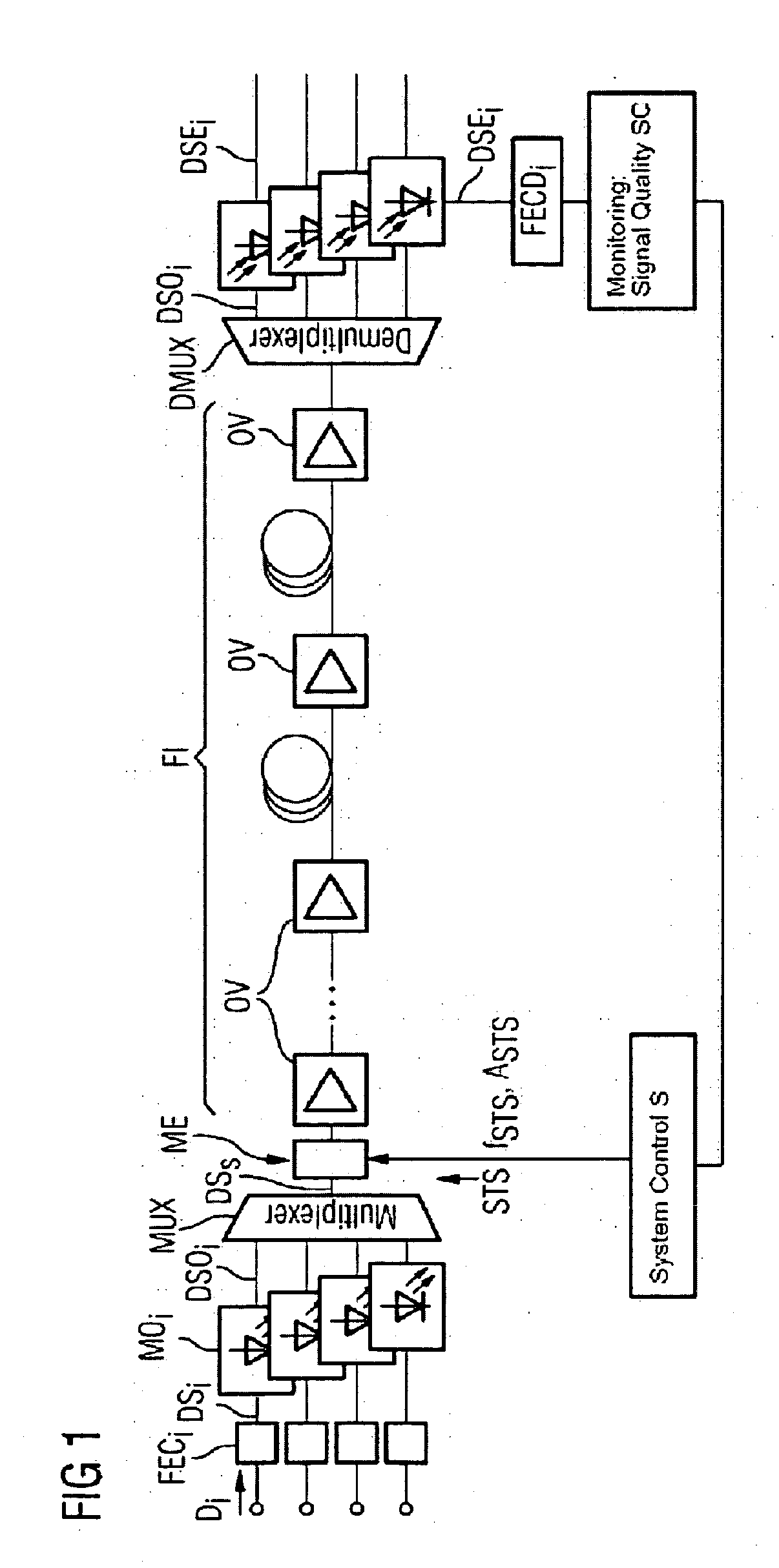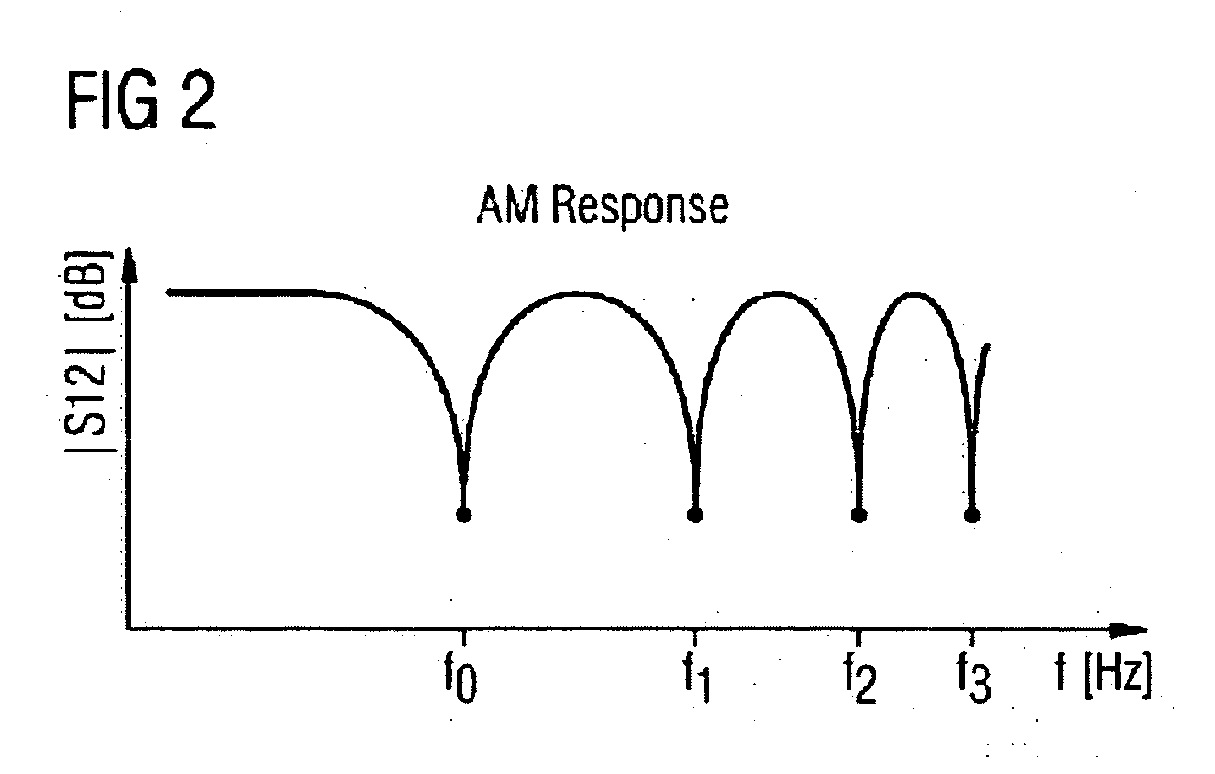Method and arrangement for determining the dispersion of an optical transmission link
a technology of optical transmission link and dispersion, which is applied in the direction of optical apparatus testing, transmission monitoring, instruments, etc., can solve the problems of limited range and capacity of optical transmission system for long-range communication technology
- Summary
- Abstract
- Description
- Claims
- Application Information
AI Technical Summary
Benefits of technology
Problems solved by technology
Method used
Image
Examples
Embodiment Construction
[0021] In an optical transmission link such as that which is illustrated schematically in FIG. 1, the data signals Di to be transmitted are initially protected in an FEC encoder FECi. A plurality of optical carrier signals are then modulated with the encoded data signals DSi in modulators MOi, and the optical data signals DSOi are combined by the multiplexer MUX to form a multiplex signal DSs on the sending side. In the modulation unit ME, a sinusoidal noise signal STS is modulated (preferably amplitude-modulated) onto all of the optical data signals DSs together, said optical signals being output by the multiplexer MUX. The term modulation here is intended also to include equally acting effects that are caused by superimposition. Consequently, the signal quality is degraded and the number of bit errors which must be corrected by the FEC is increased. The noise signal STS can be varied in both frequency fSTS and in amplitude ASTS. Both modulation parameters are set by means of a sys...
PUM
 Login to View More
Login to View More Abstract
Description
Claims
Application Information
 Login to View More
Login to View More - R&D
- Intellectual Property
- Life Sciences
- Materials
- Tech Scout
- Unparalleled Data Quality
- Higher Quality Content
- 60% Fewer Hallucinations
Browse by: Latest US Patents, China's latest patents, Technical Efficacy Thesaurus, Application Domain, Technology Topic, Popular Technical Reports.
© 2025 PatSnap. All rights reserved.Legal|Privacy policy|Modern Slavery Act Transparency Statement|Sitemap|About US| Contact US: help@patsnap.com



